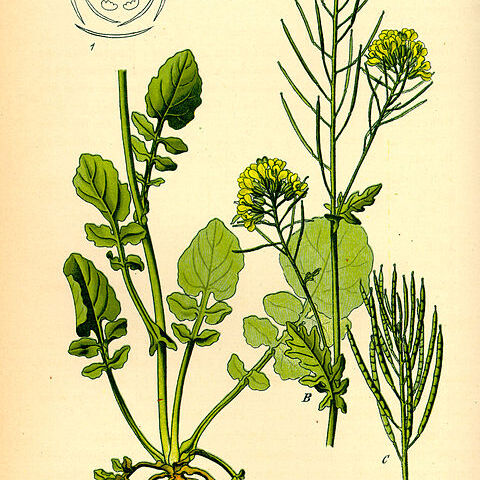Herbs biennial or perennial, with rhizomes or woody caudex, rarely annuals. Trichomes simple or absent. Stems erect, sometimes prostrate, angular. Basal leaves rosulate or not, lyrate-pinnatifid or pinnatisect, rarely undivided. Cauline leaves petiolate or sessile, auriculate or amplexicaul, entire, dentate, pinnatifid, or pinnatisect. Racemes many flowered, often ebracteate; rachis striate. Fruitng pedicels slender or thickened, erect or divaricate. Sepals oblong or linear, erect or spreading, base of lateral pair saccate. Petals yellow, rarely creamy white; blade spatulate or oblanceolate, apex obtuse or rounded; claw obscurely differentiated. Stamens 6, tetradynamous; filaments not dilated at base; anthers oblong, obtuse at apex. Nectar glands 4, median pair toothlike; lateral pair annular. Ovules 10-40 per ovary. Fruit dehiscent siliques, linear or rarely elliptic-linear, terete, 4-angled, or latiseptate, sessile or shortly stipitate; valves with a prominent midvein and distinct marginal veins, mostly glabrous, smooth or torulose; replum rounded; septum complete; style obsolete or to 5 mm; stigma capitate, entire or slightly 2-lobed. Seeds uniseriate or subbiseriate, wingless, margined, or winged, oblong, ovoid, or orbicular, plump or slightly flattened; seed coat reticulate, rarely tuberculate, not mucilaginous when wetted; cotyledons accumbent.
Annual, biennial or perennial herbs. Sepals dimorphic. Petals clawed, yellow. Stamens 6. Nectariferous glands 4, 2 horseshoe-shaped at inner base of short stamens, 2 rod-shaped, median in front of pairs of long stamens. Stigma slightly bilobed. Siliqua dehiscent, beakless, quadrangular in section; valves with prominent midrib. Seeds in 1 row per locule.

